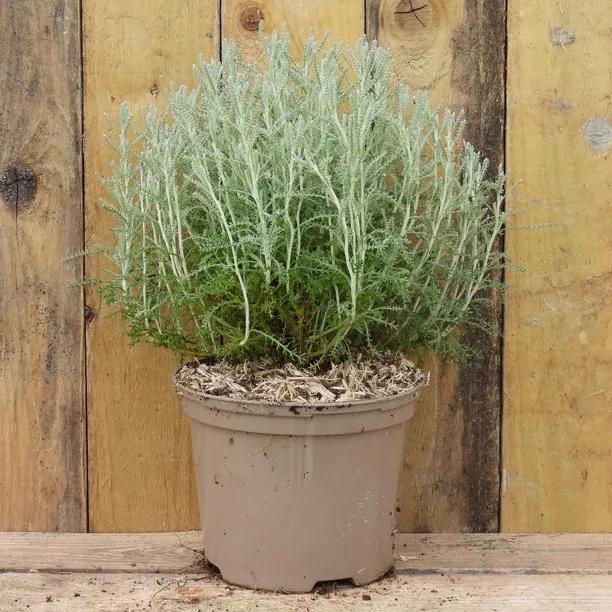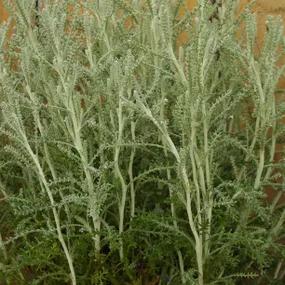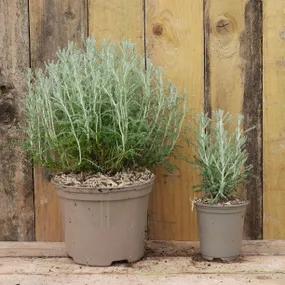Cotton Lavender Plants
Honest Delivery PricesSantolina chamaecyparissus
- Silvery-white evergreen foliage
- Full sun.
- Prefers sharply drained, poor soils
- Aromatic leaves, culinary herb
- Use in herbal teas
- Yellow flowers July-August
- Drought tolerant
- To 50-60cm by 100cm after 5 years
Recommended extras
Description
Santolina chamaecyparissus, Cotton Lavender Plants
Santolina chamaecyparissus is a popular and easy to grow dwarf evergreen shrub with silvery-white foliage in a neat, rounded, bushy habit.
In mid to late Summer, there are masses of bright yellow flowers. The aromatic leaves are an edible herb, also used for herbal tea to "calm rumbling and gassy digestion".
Equally at home in a mixed border, planted en masse, in a container. Its unique texture is a perfect filler amongst other perennials, and its pale colouring provides either provides a backdrop for popping bright colours, or joins in a cool pastel or white design.
This undemanding shrub is an effective choice for lining a dry, sunny path or paved area where it will get brushed against and its fragrance appreciated.
The new shoots are white and woolly look, opening into masses of narrow, silvery-grey, finely dissected leaves.
In summer, an abundance of slender stems hold flowers aloft in a haze of yellow polka dots. The enduring popularity of this outstanding shrub is well-deserved, and no sunny garden ought to be without one.
Delivered pot-grown, year round.
Browse our selection of garden shrubs.
Features
- Silvery-white evergreen foliage
- Full sun.
- Prefers sharply drained, poor soils
- Aromatic leaves, culinary herb
- Use in herbal teas
- Yellow flowers July-August
- Drought tolerant
- To 50-60cm by 100cm after 5 years
Growing Santolina chamaecyparissus
It hails from dry, rocky habitats in the Mediterranean, and is therefore happiest in poor to moderately fertile, well-draining soil in full sun.
It is hardy throughout the UK, providing drainage is adequate.
As with all tough Mediterranean shrubs, it is excessive moisture (rather than the low temperature) that can cause problems during Winter: almost dry roots in winter is good for these plants.
In Your Garden Design
Santolina chamaecyparissus mixes well with a huge variety of plants, naturally going with lavender, oregano, and sage for an aromatic combo.
Add some cistus and Rosa gallica in for extra height and floral impact in your Mediterranean paradise starter garden.
Did You Know?
Commonly as ‘cotton lavender’, it is not related to either of those plants. Santolina belongs to Asteraceae, the daisy family: one of the largest families, including sunflowers, asters, thistles, dahlias, zinnias, and daisies.
Santolina chamaecyparissus is found across western and Central Europe.
The absolutely official date of Santolina's introduction is 1573. It spreads well enough in the British climate and has naturalised mostly in the South and Isle of Man, but it can be found in areas dotted throughout the UK.





